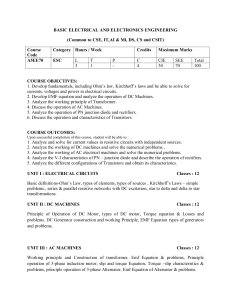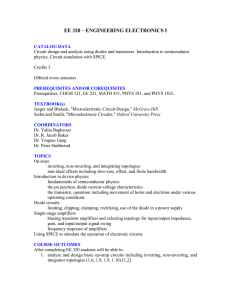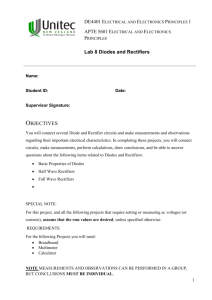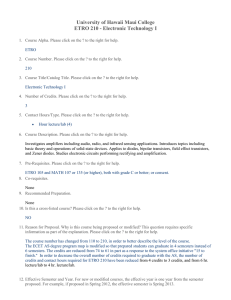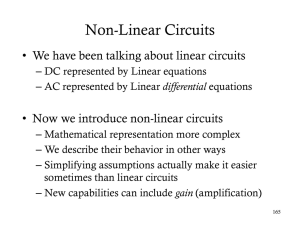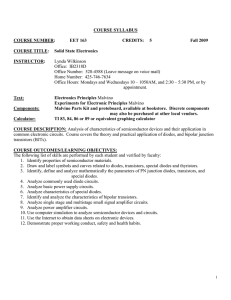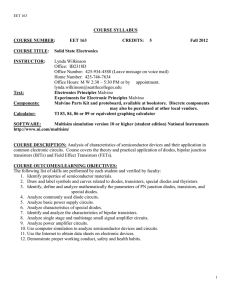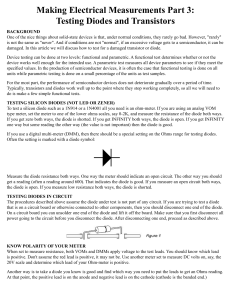Maui Community College Course Outline 1. Alpha and Number
advertisement
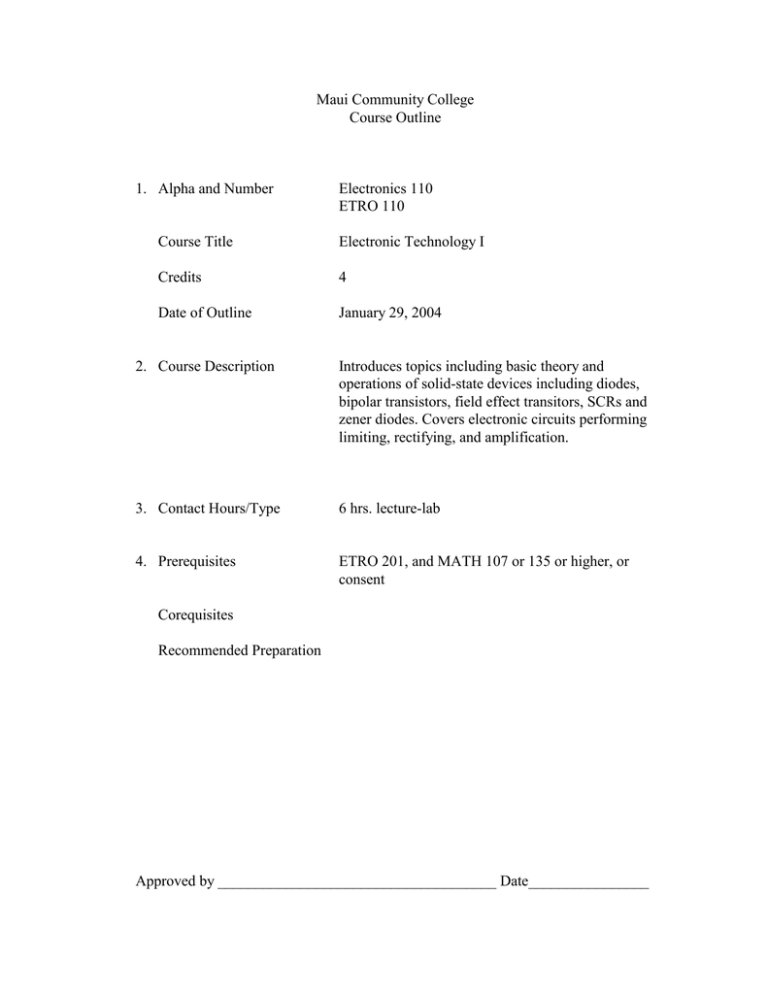
Maui Community College Course Outline 1. Alpha and Number Electronics 110 ETRO 110 Course Title Electronic Technology I Credits 4 Date of Outline January 29, 2004 2. Course Description Introduces topics including basic theory and operations of solid-state devices including diodes, bipolar transistors, field effect transitors, SCRs and zener diodes. Covers electronic circuits performing limiting, rectifying, and amplification. 3. Contact Hours/Type 6 hrs. lecture-lab 4. Prerequisites ETRO 201, and MATH 107 or 135 or higher, or consent Corequisites Recommended Preparation Approved by _____________________________________ Date________________ 2 5. General Course Objectives Describe the function, operation and characteristics of solid-state electronic devices. Measure and test diode circuits. Measure and test transistor circuits. 6. Specific Course Objectives, Competencies, and Student Learning Outcomes On successful completion of this course the student will be able to: a. Identify types of diodes b. Describe forward and reverse bias c. Measure the current through a junction diode d. Troubleshoot diode circuits e. Describe diode limiter operation f. Describe diode clamper operation g. Identify types of transistors h. Describe NPN and PNP transistor operation i. Test transistors j. Measure the Alpha and Beta of transistors k. Measure the bias of an amplifier circuit l. Describe amplifier configurations m. Measure the input/output waveforms from common emitter, common collector and common base amps n. Identify and test rectifier circuits o. Describe zener operation p. Measure and test zener diode regulator circuits 7. Recommended Course Content and Approximate Time Spent on Each Topic 1-2 weeks Introduction to electronic devices, KVL and KCL review (a) 1-2 weeks Diode action, operation and characteristics; diode limiter, schematic symbols, operating characteristics and waveforms (a,b) 1-2 weeks Junction diode faults and troubleshooting; power supplies and diode rectifiers (a,b,c,d) 1-2 weeks Half and full wave rectifiers, operations and characteristics; Bridge rectifiers and operation (a,b,c,d,e,f,n) 1-2 weeks Zener diode action and voltage regulation. Power supply filters.(n,o,p) 1-2 weeks Bipolar transistor action, testing and biasing; amplifiers, configuretions, common emitter amp (g,h,i,j,k,l,m) 1-2 weeks Common collector amplifiers, circuit values and waveforms; common base amplifiers, (g,h,i,j,k,l,m) 1-2 weeks Amplifier circuits and testing (g,h,i,j,k,l,m) 1 week Review and Final (a-p) 3 8. Text and Materials, Reference Materials, Auxiliary Materials and Content An appropriate text(s) and materials will be chosen at the time the course is to be offered from those currently available in the field. A representative example is: Text: Thomas L. Floyd, Electronics Fundamentals –Circuits, Devices, and Applications, Prentice Hall Materials: Text(s) may be supplemented with: C.A.I. NIDA 130 DAAD Courseware Electronics Lab Accompanying practice exercises Articles, handouts and/or exercises prepared by the instructor Magazine or newspaper articles On-line materials Other: Scientific Calculator Engineering Notebook 9. Recommended Course Requirements and Evaluation Specific course requirements are at the discretion of the instructor at the time the course is being offered. Suggested requirements might include, but are not limited to: Examinations (written and/or oral) In-class exercises Homework Quizzes Projects/research Attendance and/or class participation 40-60% 0-30% 20-30% 0-30% 0-40% 0-20% 10. Methods of Instruction Instructional methods vary considerably with instructors and specific instructional methods will be at the discretion of the instructor teaching the course. Suggested techniques might include, but are not limited to: Lecture, problem solving, and class exercises or readings Class discussions or guest lectures Audio, visual or presentations involving the internet Visual step-by-step instruction with students following along Student class presentations Group or individual projects Service Learning
